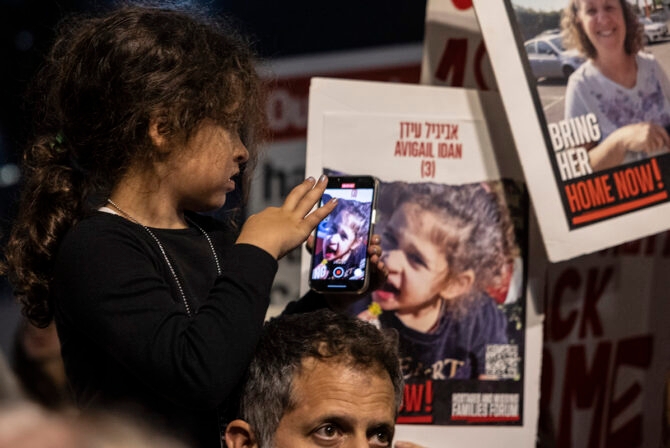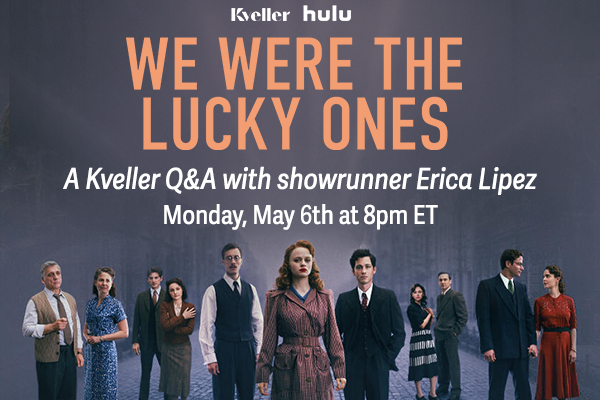For me, it doesn’t get any better than this: the joyous festival of Purim and the celebration parade for St. Patrick’s Day (in my hometown, Chicago, where they do no less than dye the river green) are overlapping this year. This Saturday, March 11th, a day with no associated meaning otherwise, has now become my ultimate interfaith, culture-clashing mash-up holiday, thanks to my family’s unique blend of ethnic, cultural, and religious traditions.
This new unicorn of a holiday can best be compared to Chrismukkah, because when those two celebrations overlap, it’s not only the best of both worlds—eggnog AND latkes, twinkling Christmas lights AND glowing Hanukkah candles, and double the gifts— it’s also representative of the complete integration of my two cultural heritages, which isn’t something I get to experience often.
To explain: My mother is a north side Chicago-born Catholic-turned-feminist who converted to Judaism for my father, a south side Chicago Reform Jew. Despite her willingness to shed her childhood religious affiliation for a new one, her cultural traditions had a more permanent hold on her, and therefore, on me.
My parents had every intention of raising me as Jewish, and truly succeeded in many ways: I attended religious school, learned Hebrew, became a bat mitzvah, and participated in synagogue life (until I was a too-cool teenager more interested in sleeping through Sunday school). As an adult, I’ve attended Shabbat services, sung in the High Holiday choir, and developed a meaningful relationship with our rabbi.
But, regardless of how Jewish I felt growing up, it was nevertheless awkward to explain to my Hebrew school friends why I decorated a Christmas tree, looked for the Easter bunny behind the garage, or ate corned beef and cabbage in my green pants on St. Patrick’s Day.
Providing a simple answer to my friends’ questions, like, “My mother’s entire family is Catholic” or “My grandpa John is 100% Irish” rarely worked in my favor. Revealing the double-sidedness of my family tree always managed to feel degrading to my Jewishness—like I was losing my legitimacy as a member of the tribe—and what kid doesn’t want to fit in with their peers? And never mind trying to explain it to friends who weren’t Jewish: “OK…but aren’t you…Jewish?” Yes. Yes, I am. But with a Christmas tree and a shamrock shake, OK?
Naturally, to perpetuate this doubly-confusing cultural identity, I’ve now passed my childhood dilemma on to the next generation by procreating with a fellow half Jew/half Catholic (or “Cashew,” as we are so delightfully called—naming this phenomenon after a nut isn’t too far off). Hopefully, by the time my son is old enough to have to answer to his friends about where he comes from and why he celebrates seemingly everything, I will have concocted the perfect elevator speech for him to memorize to avoid blank stares and/or furrowed brows. But in the absence of the perfect comeback, it is my aim to create a joyful home, full to the brim with festive wonder that respects both sides of his ancestral story.
So, when the Hebrew and Gregorian calendars collide to gift us with a holiday that is fully ours, such as Purim/St. Patrick’s Day, I choose to embrace it, along with the challenge to create memories and meaning out of two seemingly disparate celebratory events. It’s too bad Purim and St. Patrick’s Day doesn’t have a super catchy mash-up name (St. Patrickurim? Purtrick doesn’t exactly roll off the tongue, either). Never mind: to unite these holidays, I’m creating these family-friendly activities:
1. Throw your own freedom parade. The Jews escaped persecution by Haman, and St. Patrick escaped enslavement, so really, St. Patrickum/Purtrick (nope, not quite working yet) is about freedom, survival, and autonomy. In both stories, people relied on prayer and faith to get them through difficult times, so encourage your kids to dress up in a costume that represents freedom to them. The best part: You don’t even have to leave your living room to enjoy the procession!
2. Bring your neighbor corned beef and cabbage. A good meal is best when shared, and the spirit of Purim encourages us to do good deeds, so why not combine the two? Purim also encourages us to eat, drink, and be merry, and we believe in the adage, “the more, the merrier!” So put that corned beef and cabbage in your nicest casserole dish, grab a Guinness (or a green beer), and drop off dinner and drinks. Who says no to a home-cooked meal? Plus, if you have a crockpot, corned beef and cabbage is super easy to make.
3. Bake green hamantaschen. All you need is a little bit of green food dye to make your batter gleam like the Emerald Isle, and voila! Haman’s hats are the color of clovers. Although the three points of Haman’s hat signified his ill-will toward the Jews, and St. Patrick thought clovers were an indication of the holy trinity, these green treats allow us to meet somewhere in the (delicious) middle.
I’m excited by the prospect of sharing these traditions with my child, in new and silly ways. Where I once felt alienated as a younger person, I now see endless creative possibilities in merging these two identities. And as a mother, I recognize the importance of teaching my child inclusivity, kindness, and reverence— but with levity. Those lessons aren’t only for us to extend to others—they should also be observed in the way we treat ourselves. I’m Jewish and Irish, and so is he. I hope he is always proud to be both.
Kvelling in the Chicago Area? Check out Kveller Chicago.







